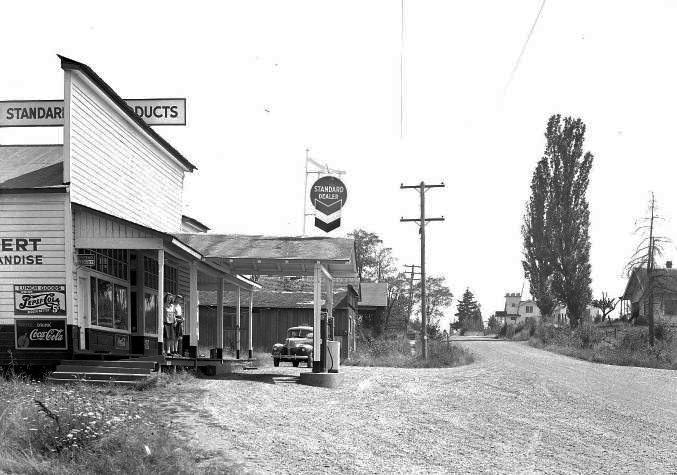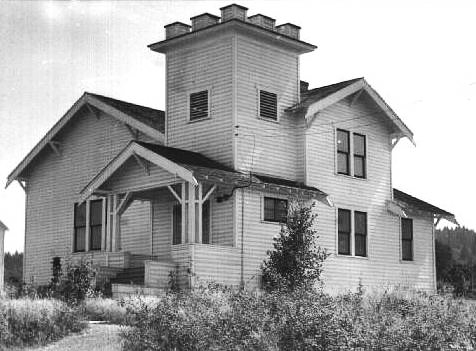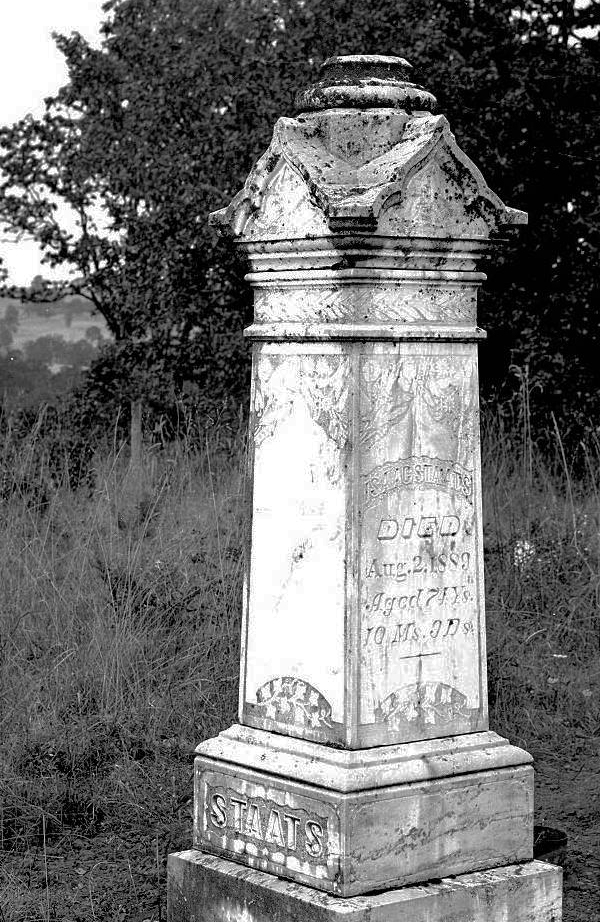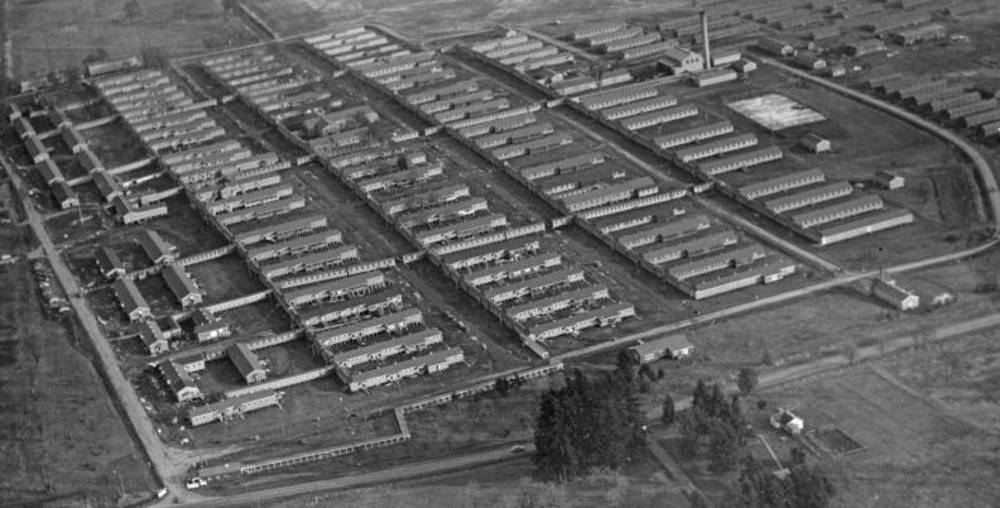The unincorporated Polk County community of Airlie began as the terminus of a railroad that planned to connect the rich farms of the southern Willamette Valley with Portland markets. William Reid, a Glasgow-born attorney who came to Oregon in 1874 as a representative of Scottish investors, established the narrow-gauge Oregonian Railway in 1880. He pushed the westside branch of the railroad through Dallas and Monmouth, reaching the site of Airlie in September 1881. The terminus was named for Reid’s friend and investment associate, the Earl of Airlie. A through route to Portland was not completed until 1887, and in the meantime the Southern Pacific Company opened a parallel standard-gauge railroad only five miles east of Airlie that directly connected Corvallis and Portland.
Financial difficulties stalled the extension of the Oregonian Railway south of Airlie, and the town became the terminus of a railroad with dubious prospects. By 1890, the Southern Pacific Company had bought the railroad, and three years later converted the tracks to standard gauge. In the 1890s, a mixed freight, passenger, and mail train left Airlie every day but Sunday for Dallas and Portland. For a time in the 1900s, a small gasoline railcar of the Independence & Monmouth Railroad made two trips a day to Monmouth and Dallas, with connections to Independence.
Southern Pacific built a modest station in Airlie with a passenger waiting room, storage space for freight and express shipments, and an office for the agent, who also represented Wells, Fargo & Company’s express service and the Postal Telegraph system. The Airlie post office had opened in 1882, and by 1908 the town sported two general merchandise stores, two warehouses, a hop dryer, and a meat market. Wheat and hops were the principal crops near the town.
In 1913, a small group of Mennonite farmers moved to the area; they formed Firdale Mennonite church the next year. The church closed in 1924 after much of the congregation left due to “poor soil conditions.”
The railroad from Airlie north to Monmouth was abandoned in 1927, but the community survived, anchored by a general store and gas station, an Evangelical church, and the post office. In 1942, the U.S. Army established Camp Adair, a large training post on the land surrounding Airlie. The post office closed in 1943. After the camp was decommissioned in 1946, the land returned to farm use.
The post office never reopened, but the Airlie store and gas station remained for many years at the junction of Airlie and Maxfield Creek roads. The Airlie Winery opened in 1986, and the name of the town is also perpetuated in the Airlie Press, a publisher of local poets established in 2007.
-
![Gas station and general store in Airlie, Aug. 1941.]()
Airlie, gas station, 1941.
Gas station and general store in Airlie, Aug. 1941. Salem Public Lib. Oreg. Historic Photo Collec., 8101
-
![Street view, Airlie, April 1965.]()
Airlie, street view, 1965.
Street view, Airlie, April 1965. Salem Public Lib. Oreg. Historic Photo Collec., 5418
-
![Evangelical church in Airlie, Aug. 1941, on part of the 60,000 acres proposed for development as Camp Adair for World War II.]()
Airlie, Evangelical Church, 1941.
Evangelical church in Airlie, Aug. 1941, on part of the 60,000 acres proposed for development as Camp Adair for World War II. Salem Public Lib. Oreg. Historic Photo Collec., 8103
-
![Grave marker for Isaac Staats, Airlie, located on land proposed for development into U.S. Army cantonment at Camp Adair, Aug. 1941.]()
Staats, Isaac, gravestone, Airlie, 1941.
Grave marker for Isaac Staats, Airlie, located on land proposed for development into U.S. Army cantonment at Camp Adair, Aug. 1941. Salem Public Lib. Oreg. Historic Photo Collec., 8099
Related Entries
-
![Adair Village]()
Adair Village
The city of Adair Village is located in Benton County about seven miles…
-
![Monmouth]()
Monmouth
Monmouth’s claim to fame as Oregon’s last town to prohibit the sale of …
Related Historical Records
Map This on the Oregon History WayFinder
The Oregon History Wayfinder is an interactive map that identifies significant places, people, and events in Oregon history.
Further Reading
McArthur, Lewis A. and Lewis L. Oregon Geographic Names, 7th edition. Portland: Oregon Historical Society Press, 2003, p.11.






